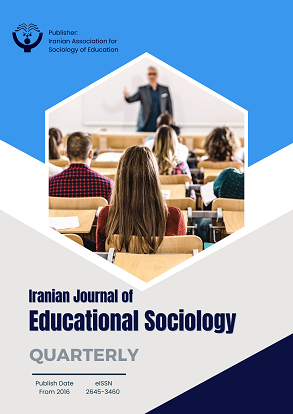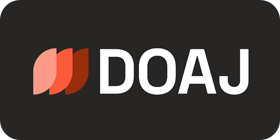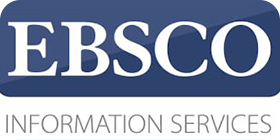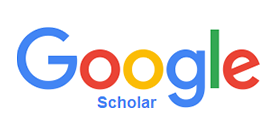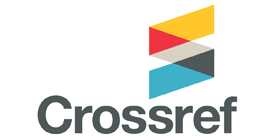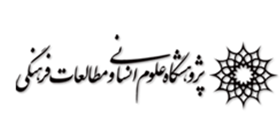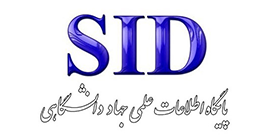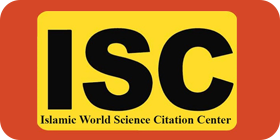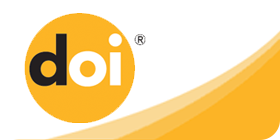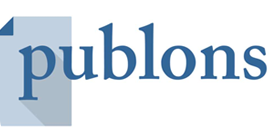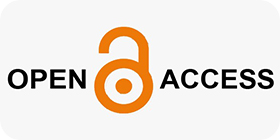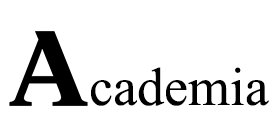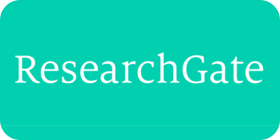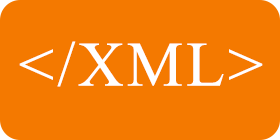Proposing an Organizational Ethics Model in Iranian Schools
Keywords:
Organizational ethics , teacher ethics, ethical leadership, ethical culture, student ethicsAbstract
Purpose: This study aimed to design and validate a comprehensive model of organizational ethics in Iranian schools, integrating leadership, teacher ethics, learner ethics, and ethical culture.
Methods and Materials: The research employed an exploratory mixed-methods design. In the qualitative phase, semi-structured interviews were conducted with 15 educational experts and provincial education directors selected through purposive sampling until theoretical saturation. Thematic analysis using the Attride-Sterling framework was applied to identify basic, organizing, and global themes. In the quantitative phase, a stratified quota sample of 368 school principals from Khuzestan and Kurdistan provinces completed a researcher-developed Likert-scale questionnaire derived from the qualitative findings. Content validity was assessed using CVR and CVI indices with expert panels. The model was further validated through confirmatory analysis using SmartPLS 3, applying structural equation modeling, composite reliability, and average variance extracted (AVE) for measurement robustness.
Findings: The structural model demonstrated that ethical leadership (β = 0.837, t = 43.608, p < .001), teacher ethics (β = 0.850, t = 47.868, p < .001), learner ethics (β = 0.908, t = 101.586, p < .001), and ethical culture (β = 0.515, t = 11.677, p < .001) were significant predictors of organizational ethics. Supporting mechanisms (β = 0.905, t = 99.443, p < .001), guaranteeing mechanisms (β = 0.758, t = 29.120, p < .001), and contextual enablers (β = 0.923, t = 132.177, p < .001) also contributed significantly. Reliability indices exceeded 0.90, and convergent validity (AVE) ranged from 0.55 to 0.74, confirming psychometric adequacy.
Conclusion: The validated model demonstrates strong explanatory power and practical relevance, offering an evidence-based framework for promoting organizational ethics in schools. By addressing ethical leadership, teacher and learner ethics, and school culture within supportive institutional contexts, the model provides a roadmap for fostering integrity, responsibility, and educational quality.
Downloads
References
Abdelmotaleb, M., & Saha, S. K. (2020). Socially Responsible Human Resources Management, Perceived Organizational Morality, and Employee Well-being. Public Organization Review, 20, 385-399. https://doi.org/10.1007/s11115-019-00447-3
Ahadpour, M., & Bahrengi, M. R. (2020). Modeling the Impact of Ethical Leadership on Teacher Empowerment with the Mediation of Job Engagement. Applied Educational Leadership, 1(3), 33-50. https://ael.uma.ac.ir/article_1116.html?lang=en
Feiz, S. A., & Elahi, Z. (2021). A Genealogy of Teachers' Professional Ethics in Education. Professional Ethics in Education, 1(1), 154-175. https://sid.ir/paper/950349/en
Kabirian, M. (2024). The Process of Professional Ethics Development in Midwifery Students: A Grounded Theory Study. Iranian Journal of Nursing and Midwifery Research, 29(3), 302-308. https://doi.org/10.4103/ijnmr.ijnmr_12_23
Martínez, C., Skeet, A. G., & Sasia, P. M. (2021). Managing organizational ethics: How ethics becomes pervasive within organizations. Business Horizons, 64(1), 83-92. https://doi.org/10.1016/j.bushor.2020.09.008
Masouminejad, R., Madadlou, G., Babaei, S., Babaei, Z., & Shami, D. (2022). Identifying and Explaining the Components of Teachers' Ethical Behavior in the Teaching Process with an Emphasis on the Dimensions of Teacher Knowledge. Educational Leadership and Management Quarterly, 16(3), 147-182. https://journals.iau.ir/article_697408.html?lang=en
Mohaqqeq, M. J., & Fakhari Taze Yzadi, S. (2022). A Study of Students' Behavioral Problems in Schools. Quarterly Journal of Psychology and Educational Sciences Studies, 35, 177-184. https://en.civilica.com/doc/1530523/
Moshref Javadi, M. H., Nili Pour Tabatabaei, S. A. A., & Shafiei, M. T. (2021). Identifying and Prioritizing the Most Important Behavioral Indicators of Ethical Leaders. Ethics in Science and Technology, 16(2), 25-37. https://ethicsjournal.ir/article-1-2281-en.html
Mousavi, S. Z. (2023). The Role of Professional Ethics in Improving Employee Organizational Behavior. 1st International Conference on Management, Accounting, and Economics with a Future Perspective,
Oktavian, M. (2021). Professional ethics in teaching. Device, 10(1). https://doi.org/10.32699/device.v10i1.1486
Pansiri, J., Mohamadi, M., Amanollahi, A., & Bakhshi, H. (2021). Ethical Governance and Leadership in Schools: A Qualitative Study Using Document Analysis Approach. Psychology and Educational Sciences, 51(2), 245-264.
Purnomo, T. P., Riyanto, S., & Sugoni. (2021). The implementation of business ethics in educators to improve the quality of school services. The Indonesian Journal of Business Analytics, 5(2). https://doi.org/10.20473/tijab.v5.I2.2021.27609
Rahimi, R., Vahdat, R., & Sameri, M. (2024). Structural Equation Modeling of Professional Ethics Based on Social Responsibility, Organizational Transparency, and Organizational Commitment With the Mediating Role of Social Cynicism. Jsied, 175-195. https://doi.org/10.61838/jsied.4.4.11
Razavi Al-Hashem, S. B., Payervand, H., & Mirzaei, M. (2023). Designing a Contingency Model of Professional Ethics: A Step Toward Organizational Citizenship Behavior. Cultural Management, 17(60), 1-16. https://sanad.iau.ir/en/Article/818192
Rezaei, M., Fallah, R., Maranjory, M., & Rostami Mazoee, N. (2024). Provide a structural model of audit quality based on the impact of auditing professional ethics and the moderating role of organizational culture. International Journal of Nonlinear Analysis and Applications, 15(2), 285-299.
Sa'u, A. (2022). Ethical Challenges Among Nurses In Samoa: Workplace, Practice And Profession Victoria University Of Wellington Aotearoa New Zealand]. https://openaccess.wgtn.ac.nz/articles/thesis/Ethical_Challenges_Among_Nurses_in_Samoa_Workplace_Practice_and_Profession/19752985
Sadati, L. (2023). Development of Professional Ethics Curriculum in the Operating Room for the Current Era of Surgery: A Mixed Method Study. Canadian Journal of Bioethics, 6(3-4), 57-68. https://doi.org/10.7202/1108004ar
Sari, E. D. K., Rustam, A., Sa'diyah, R., Mursyidi, W., & Zilal, M. (2022). Professional Ethics of Public Elementary School Teachers In Jakarta Province, Indonesia. https://www.mendeley.com/catalogue/d6a7712c-e29d-37cf-90a2-707eea50e78c/
Seyfi Fathabadi, S., Kamyabi, M., Hajipour Abaei, N., & Manzaritavakoli, H. (2023). Structural equation model of the relationship between professional ethics and teacher emotions with the mediation of moral identity. Journal of Adolescent and Youth Psychological Studies (JAYPS), 4(6), 86-93. https://doi.org/10.61838/kman.jayps.4.6.9
Sha, H. (2022). Social and Moral Practices of the Organizations and Employee-Based Brand Equity: Female Digital Labor Perspective. Frontiers in psychology. https://www.frontiersin.org/journals/psychology/articles/10.3389/fpsyg.2022.910483/full
Shirvani, T., Omidi, A., & Safari, S. (2024). Compilation of Organizational Virtue Model based on Professional Ethics and Organizational Justice of Employees of Sports and Youth Departments of Chaharmahal and Bakhtiari Province. Human Resource Management in Sports, 11(1), 113-130. https://doi.org/10.22044/shm.2023.13653.2584
Smith, J., & Johnson, L. (2023). The relationship between professional ethics and auditor independence. American Journal of Auditing Ethics, 15(6), 56-72. https://doi.org/10.1080/ajaethics.2023.54321
Sugiyanti, S. (2023). Determining Professional Ethics as a Mediator Against Tax Avoidance (Study on Malang Regional Tax Consultant). Enrichment Journal of Multidisciplinary Research and Development, 1(7), 362-368. https://doi.org/10.55324/enrichment.v1i7.60
Ullah, S., Ahmad, S., Akbar, S., & Kodwani, D. (2019). International Evidence on the Determinants of Organizational Ethical Vulnerability. British Journal of Management, 30(3), 668-691. https://doi.org/10.1111/1467-8551.12289
Wang, Y. (2024). Ethical Concepts in the Tao Te Ching and Professional Ethics Education: Principles, Challenges, and Opportunities. The Educational Review Usa, 8(2), 232-236. https://doi.org/10.26855/er.2024.02.006
Yazdanshenasi, M. (2024). The Role of Responsibility and Professional Ethics in the Success of Teachers and Its Effects on the Quality of Education and Learning. https://civilica.com/doc/1977078/
Zakizadeh, A., Hassan Dehghan, D., Mozhde, R., Abolfazl, S., & Shahnaz, N. (2023). Fuzzy Delphi technique application in designing the managers' professional ethics factors model with an emphasis on the mine workers' mental health in the form of interpretive structural modeling. Int. J. Nonlinear Anal. Appl.
Zhang, W. (2024). Ethical Dilemmas in Accounting: A Comprehensive Analysis of Professional Ethics. Academic Journal of Business & Management, 6(2), 137-145. https://doi.org/10.25236/AJBM.2024.060220
Downloads
Published
Submitted
Revised
Accepted
Issue
Section
License
Copyright (c) 2025 Azar Ghalavand (Author); Mohammad Senobari; Fardin Abdollahi (Author)

This work is licensed under a Creative Commons Attribution-NonCommercial 4.0 International License.
